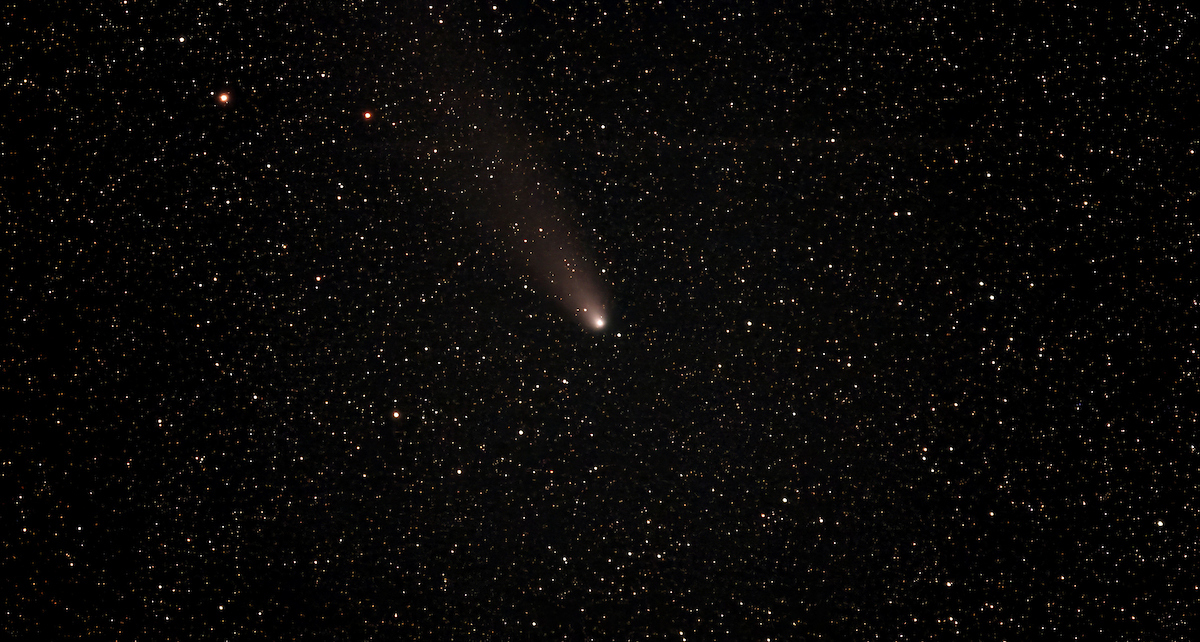Comet C/2023 A3 (Tsuchinshan–ATLAS)
The comet and tail keep getting smaller and fainter. The estimated magnitude of the comet was +7.6. The Stellina telescope did not use a filter and the Vespera II telescope was fitted with a CLS (city light suppression). The CLS filter causes a colored tint to the image. I’m not including images from the Vespera Classic, or Vespera Passengers telescopes that were fitted with Dual (H-alpha, O-III) interference filters for the emission nebula being observed later in the night.


















